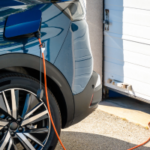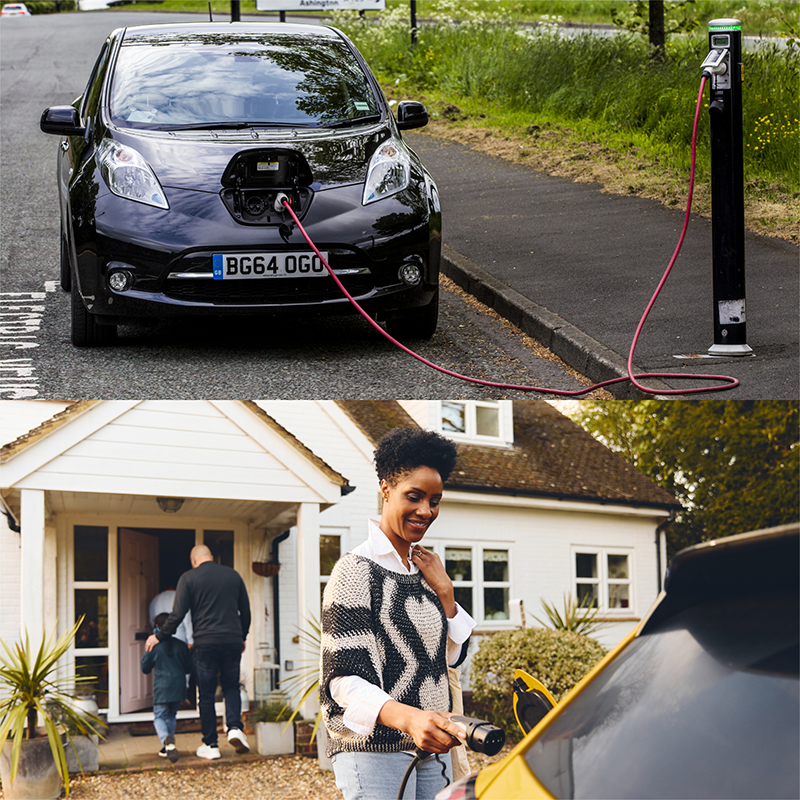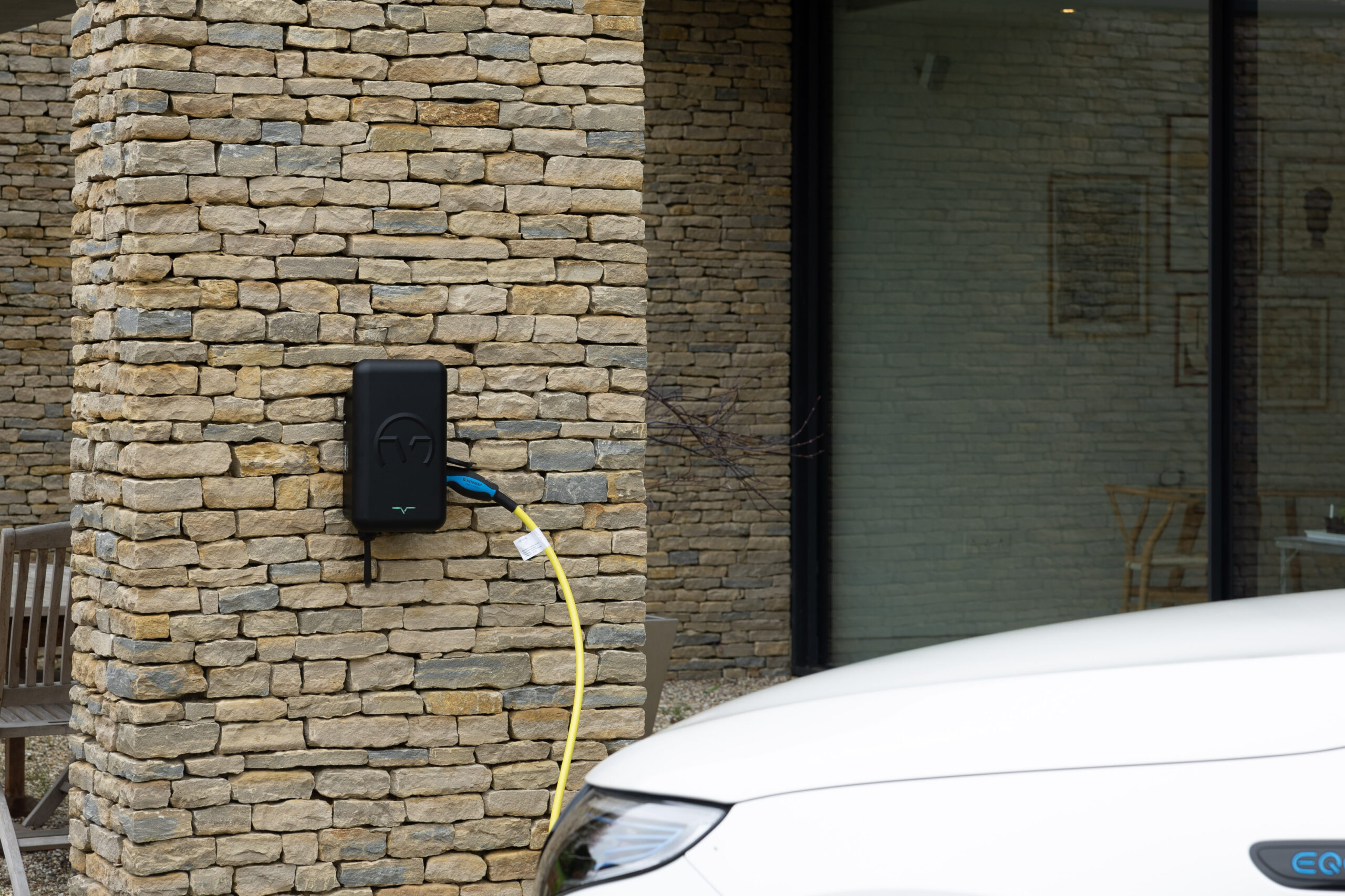
What are EV Tariffs and How Do You Choose the Right Tariff
27 February 2024
Public Charging Stations Vs Home EV Charging – Which is Better?
29 February 2024Preparing for an EV Charger installation – what you need to know
Installing an EV home charger where you live is the most cost-effective, convenient, and greener way to charge your electric vehicle (EV). Some may be daunted at the thought of the task. But the truth is that it’s not that complicated. Not only will a qualified electrician take on all the tough installation work, but it typically takes only 2-3 hours to complete too. However, to ensure you and your home are fully set for the EV charger installation, you’ll need to consider a few things first.
These include:
- The Benefits of EV home charging
- Requirements to install an EV home charger
- Standard Installation vs. Non-Standard Installation
- How your EV charger is installed
- Which type of charger to choose
- Where to place your charging unit
- The cost of installing an EV charger
Don’t worry, though. We’re going to walk you through each of them so that by the end of this article you’ll know exactly what you need for an easy and efficient EV charger installation.
The benefits of EV home charging
The benefits of getting an EV charger installed at home are many.
Cost
Lower household energy rates, off-peak pricing and competitive EV-specific tariffs all make home charging much more cost-effective than using public chargepoints.
When charging at home you also pay 5 per cent VAT for domestic electricity in comparison to the 20 per cent VAT you have to stump up for public charging. This, plus management overheads by public charge companies, means that their rates will always be much higher than home charging.
Early 2024 data also shows that the cost of charging at a public station rose by 11% in the previous year, which when compared to the home charging 1% price rise during the same period, makes installing a home station a no-brainer.
Convenience
Hmmm, let’s see: Plugging in your EV overnight and waking up to a fully charged car versus planning your route or day around finding an available public charging location—with no queues?
Well, we know which one we prefer.
Control
A home charging installation gives you complete control over the efficiency of your charging process.
Using a smart charger like the VCHRGD Seven Pro EV charger, also means you can manage charging schedules remotely and set your car to charge when energy is at its cheapest and cleanest.
Eco-friendliness
Charging at home offers you the flexibility to be at your most environmentally friendly.
You can choose to charge when renewable energy sources such as solar, wind and nuclear power are available and so reduce your carbon footprint even further.
Longer battery life
Relying on public rapid or super-rapid charging stations to keep your EV juiced up, may seem like an OK solution, particularly if you have several public chargers nearby.
But the heat produced when fast charging your car’s battery can speed up its overall decline. The best option is to charge at a slower pace overnight at home.
Safety
All new electric cars come with Level 1 charging equipment. This is a 3-pin portable charger that can be plugged into a standard household 240-volt grounded wall socket.
But our advice regarding relying on this charger to continually power up your vehicle? Just don’t.
These chargers should only be used in emergencies. They typically can’t manage high-power usage and so risk overheating, particularly if plugged in for a long time. In worst-case scenarios, they can trigger electrical fires.
They also have a power output of 2.3kW so are the slowest way to charge your car, often taking up to 20 hours for a full charge.
A properly installed home charging station, on the other hand, comes with Level 2 charging equipment in either a 7kW (or 22kW power supply for large buildings or places of business).
This not only ensures your car is fully charged and ready to go when you plug it in overnight, but it also eliminates the dangers of electrical fires breaking out.
Requirements for EV charger installation
There are certain requirements you need to fulfill to have an EV charger installation. These include:
- Having your own property or permission in writing from your landlord.
- Having designated parking such as a private driveway, garage, or private off-street parking.
- Your parking place must be in proximity to your preferred EV charger installation location so that the charging cable can easily reach the car.
- Having a stable WiFi connection so that your charger can connect to a central server and access all the great smart charging features.
- If you live in a listed building, a maisonette or an apartment, you may need planning permission. If you’re in a recent build, you won’t have to worry; as of June 2022, all new buildings are legally required to have EV charging points.
- Complete a digital home assessment with your chosen EV charger installer to confirm that you’ll need a standard installation.
Standard vs. Non-standard installation
Installing an EV home charger means that you’re adding a new electrical load to your house’s electrical system. Ensuring that the system is capable of handling this is one of the most important parts of the EV charger installation. It’s also the difference between whether you need a standard or a non-standard installation.
Standard installation
A standard installation covers around 80% of all EV charger installations. It requires that:
- The fuse board, also known as the consumer unit, is located no more than 10 metres from the proposed charger location.
- The fuse board needs to be a trip switch type.
- Routing the charging cable won’t involve drilling through more than two walls.
- Only up to 10m of cable will be used.
- The designated location for the EV charger is a permanent structure such as a brick or plaster wall.
- Between 3-7m of plastic trunking will be used to cover up internal cable routes.
- All-in-all, the fitting time won’t take more than 3-4 hours.
Non-Standard installation
However, upgrades may be necessary if your current electrical panel is outdated or lacks the necessary capacity, or if your fuse box is not accessible. If this is the case, then you’ll need a non-standard installation.
Some upgrades can be carried out by a professional electrician. At Powerserve, we recommend getting three quotes from different electricians before you proceed with any work.
However, an electrician might not always be the expert you need as other updates to your home electrical infrastructure can involve bigger jobs.
Upgrade to a smart meter
For example, if you have an older analogue meter, it may need upgrading to a higher energy rating given that there’s going to be a higher load with the added EV charger. At this juncture, it would make sense to have a smart meter installed, particularly if you wanted to take advantage later of one of the low-cost charging EV tariffs.
The British Government is aiming for 80 per cent of homes in England, Scotland and Wales to have a smart meter by the end of 2025. According to Ofgem, if your meter needs replacing your energy supplier is required to replace it with a smart meter, unless there’s a very good reason not to.
Does your meter box have an isolation switch?
If your meter box does not include an isolation switch, you’ll need to request one from your energy provider. This is hugely important as an isolation switch is needed to power down the electrical circuit and allow an electrician to install your new EV charger safely. The good news is that your energy provider will typically come and install it free of charge.
Looped supply cable
Similarly, if your home is on a looped supply cable it will need to be changed.
A looped supply cable is when two or more properties share a single electricity cable. It can often be found in semi-detached or terraced housing. Changing it is a relatively big job, but your local Distribution Network Operator (DNO)—i.e. National Grid, Scottish and Southern Electricity Networks (SSEN), Electricity North West; Northern Powergrid, etc,—will carry out the work without cost as soon as you contact them. It’s also your DNO who’ll upgrade your main fuse (also known as the cut-out). Most homes have a 100 amp supply. However, if your house is an old property or a very small one, it may only have 80 to 60 amps (ask your electrician to check if you’re not sure). You’ll need to replace the fuse to have enough power to charge your electric car at home without problems. If you don’t know who your DNO is, you can find out by entering your postcode via the Energy Networks Association website.
Cancelling an EV charger installation
Always check the cancellation policies of the company who are installing your EV home charger beforehand, in case you discover later rather than sooner that you need a non-standard installation. For example, with Powerverse, we’ll issue a refund if, for any reason, we can’t install your charger once you’ve made payment.
Additionally, if we discover that your EV charger installation requirements fall outside of the definition of a Standard Installation and you don’t want to pay the additional costs, or you wish to return your charger for any other reason, we will refund you in full up to 14 days after installation (subject to our Cancellation Terms).
How your EV charger is installed
Once you’re good to go with the car charger installation, an expert electrician will carry out the job.
Even if you are exceptionally handy around the house, only a professional, certified EV charger installer can certify the installation equipment when it’s complete.
As per the standard installation, the overall work shouldn’t take more than 3 hours. But you can prompt a quick and smooth installation by ensuring beforehand that the installation location is clear and tidy, and the electrician has access to the electrical panel.
Your expert EV installer will then place the charging station on the designated wall in your garage or driveway, attach the charging cable, and then feed the electrical cables from your main panel to the station.
When the car charger is up and running, you will receive an EIC (Electrical Installation Certificate) from your electrician. This is a confirmation that the installation work complies with standard wiring regulations.
You must get this (so ask if it’s not offered), as you’ll need it if you ever have to file an insurance claim for a reason relating to your EV or charging unit.
If you own your apartment or live in rental accommodation, you may be eligible for grant aid from the office for zero emission vehicles (OZEV).
Your electric car charger installer will apply for any grants on your behalf but if you want to check whether you fit the criteria, you can do so here.
Types of EV chargers
Once you’re on track for your EV charging installation, you’ll also need to choose the type of charger you want. There are two to choose between: tethered or untethered.
Tethered EV chargers
Tethered EV chargers have a permanently attached charging cable, which is typically 4.8m or 7.5m in length. They attach directly to the charging port on your car and, once your EV has all the energy it needs, you just unplug and coil the cable back around the charger itself.
Untethered EV chargers
Untethered EV chargers come without a fixed cable. They all boast a socket wherein you need to insert the cable, but you’ll need to purchase the appropriate cable first. While it’s definitely less convenient, on the plus side an untethered charger can be longer, often up to 10m, which may be helpful if your parking space is a further distance from where you’ve installed your home charging point.
Where to place your charger
A charging unit must be located more than 2 meters from a public road or footpath and not directly face a public highway. It needs to be at least 750mm above the ground. Any lower and the possibility of electric shocks and other dangers occurring grows.
When figuring out the exact spot to place your car charger, first measure the length of its cable to ensure that it will reach your parked EV’s charging port.
Also, consider whether the port is on the left or right, upfront or, as with most Tesla models, at the rear.
If your electric car charger will be out in the driveway, you might want to place it around the side of the house or somewhere out of full sight.
This is not just an aesthetic consideration; some folk gain peace of mind knowing that a not-so-easily-spotted charger can reduce the possibility of someone stealing it or even trying to plug in and top up their own EV! It should be noted that the likelihood of either of these events happening is pretty rare.
EV charger installation cost
The average cost to install an EV home charger is around £1,000 but it can go as high as £1,500.
The cost is capped at £3,600 per port, however, so if your quote is higher than that ask for a breakdown or seek another installer.
Some installations include the charging unit too. With Powerverse, for example, you receive a top-of-the-range and rigorously tested 7kw solar-ready, smart unit, a downloadable smart app with all the latest features including access to real-time data, a 3-year warranty, and, of course, a seamless installation from our professionally accredited installers for £1,099. Click here to find out more.
Overall, installing an EV charger at home is the better choice in the long run.
As a one-time expense, you will make the money back within a couple of years of continuous use.
Not only will this help you save on cash and time, but it’ll also help you extend the life of your EV’s battery—along with the health of the environment.
In this business, that’s what we call a win-win-win!
About Powerverse
We’re industry experts in home energy management. Our easy-to-use app is built for your future electric home. It will effortlessly sync your solar, battery, heat pump, EV charger and more, helping you cut costs and your carbon footprint on your way to becoming energy-independent. Curious to know more? Talk to one of our experts.

